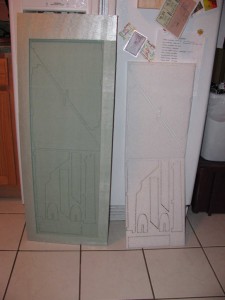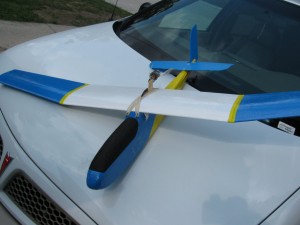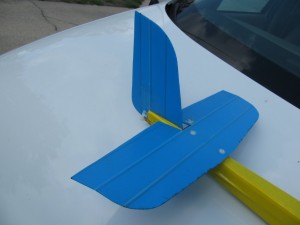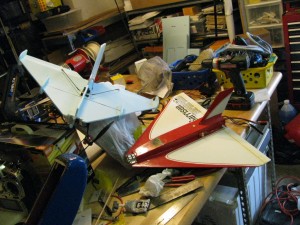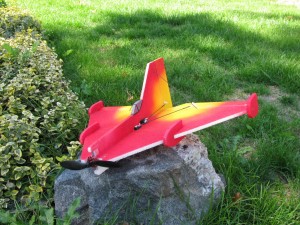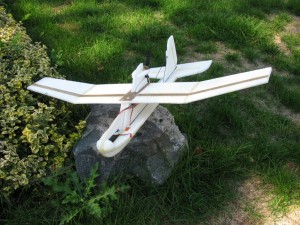Well, yeah. Sorry about that folks. Things at Che Garrison haven’t been as linear as I would have liked in the grand scheme of things. Believe it or not, however, I have actually made progress – to the point that I’m actually able to look beyond my tool issues and focus on more meaningful things like instructions and packing lists.
Right, so when last we met, I was wrestling with the Phlatprinter /// in the attempt to make it do something useful. Well, I’m happy to say that, after many, many months of simply being on the ragged edge of giving up, I finally got the damned thing to cut some decent parts.
There’s teething pains yet, as with all things, but this first cut of what the Phlatprinter is supposed to do best (cut one-pass flat foam planes) proves that the idea is at least valid to that point.
Why am I wasting so much time and effort on this? Previously I got by sorta-okay by using a band saw and a bunch of router jigs. Why should I kill myself and my budget futzing around with a hobby quality CNC rig like the Phlatprinter?
The answer has multiple parts. First off, my eyes aren’t what they were 10 years ago and, I suspect, neither are my fingers. It’s harder than it used to be to cut a straight line. Oh, I can get by for little things and tooling and whatnot, but when it comes to shipping out finished parts that will acceptable to the customer, that’s another thing. Which brings us to point two: the bar is higher now. With all the prefabricated RTF models that are flooding the market, a kit like what I will release has to present better than used to be the norm. I won’t make apologies for asking the builder to do things, mind you. It’s a kit for goodness sakes, after all. However, the level of pre-machining and the accuracy therein needs to be bumped up so that the customer has a minimal amount of hassle to deal with – and so that it’s perceived as professional out of the box, frankly.
The other issue is efficiency. The CNC, even a hack like the Phlatprinter, if properly set up and maintained, can do the same thing, over and over, to a higher level of accuracy than a human. Now, before you get all excited about that, realize that doesn’t necessarily mean “faster”. Individual tasks can often be done by hand faster than a non-specialized machine. Choosing what to do by hand and what to let the machine do is all a part of the manufacturing dance.
Third and finally, frankly, is cost of entry. The Phlatprinter was a quick and inexpensive (relatively) way to obtain some access to CNC ability. It’s a stepping stone to greater things not, I hope, an end in itself.
So, let’s see. I should let everyone know where I’m at with relation to the various models.
First off, everybody’s favorite, the Push-E Cat V5: The V5 has been a challenge in that I conceptualized it from the start as using the CNC for various manufacturing points. In particular, all the wood parts that have to be shaped (motor mounting primarily), were intended to be cut by CNC.
There’s a chance that I may – MAY – die cut some. There’s this rather slick little die-cut machine out there that would let me crank out 1/16″ ply and corrugated plastic parts as fast as I could crank the handle back and forth, but I haven’t confirmed that it will do that for me yet. I’m not dropping the dime on the thing until I can tell for sure.
Anyway, the big BIG thing that the CNC has to do for the V5 is the fuselage and tail boom. The way I’m setting it up, the fuselage and tail boom will first have channels cut into them and then the mill will go back and cut out the outlines and (in the case of the forward fuselage) the servo pocket. The forward fuselage also has a secondary manual router step where the big cavities get cleaned out rather than eating up CNC time doing that. (Routing out large pockets with the CNC is VERY time consuming.) I have one tool board to make for the tail boom that will taper the halves with a hot wire and I need to re-do the tip templates for the wing so that the tip is at the same height as the root when it’s cut. This makes things easier for the builder.
I’m going to release the V5 first as a “glued tip” (i.e. one-piece) wing. I’ll add in the removable tip option after I find a vendor for the aluminum joiners I need and finalize the design. Because of the added part count, I’m going to make “Removable Tips” a cost-add kit option rather than standard.
The last thing to address will be the tail feathers. I don’t know whether or not I can efficiently cut coroplast using the CNC. The stuff tends to melt when you hit it with power tools, after all. Before, Merrill Miller at MM Glidertech die-cut them for me. I’ve talked with Merrill about it and, at the time, he was up for doing the V5 tail feathers, too. Thing is, I’d like to keep as much in-house as possible for the best return on investment. Die-cutting is somewhat more involved because of the steps. They’re easy enough if you understand what you’re doing, but starting from scratch is a pain. I may end up seeing if I can split the difference by having Merrill make me a tool that will run on the machine I’m interested in. We’ll have to see (and quickly), but for the first few kits I may have to hand-fab them on the band saw.
Now, as part of learning the CNC, I did a couple of flat foam designs: the Positron II and the Flat Cat. I’m happy to say that both of the prototypes flew well enough that I’m taking both of them into production. In fact, there are fewer hurdles to clear for either of them, so they’ll actually be out before the Push-E Cat – the Positron II especially.
All either one of them need is for me to finish the instructions and then generate production cut profiles for the CNC. After that, it’s a matter of cutting and bagging parts. I’ll figure out a decent box for shipping along the way.
I’ve been fortunate to be able to renew my relationships with Du-Bro and Sullivan as well as setting up new dealer relationships with RC Foam and Goodwinds. As such, I’ll be able to obtain all the bits and raw material I need to put together quality kits. Balsa USA is going to take a bit more time and work, but since the wood content of my kits is fairly low, that’s not a killer issue.
Anyway, the point of this post was simply to let everyone know that progress is happening and that I’m very close to actually populating the on-line catalog. I’ll be adding motors, batteries, servos, and other bits and pieces to help folks set up their planes in addition to the kits themselves. Mostly re-sold Hobby King stuff at first, sadly, although I think I can re-establish myself with Maxx Products so I can carry Hitec servos. But eventually I hope to be able to offer Castle controllers and better quality battery packs, too.
In future posts, I’ll talk in detail about the trial and tribulations of being a first-round customer of the Phlatprinter /// as well as speaking to the details of the various planes on their way out of our doors. I may opine at times on the philosophy of various aspects of modeling, too, but hopefully that won’t eat up too much space.

